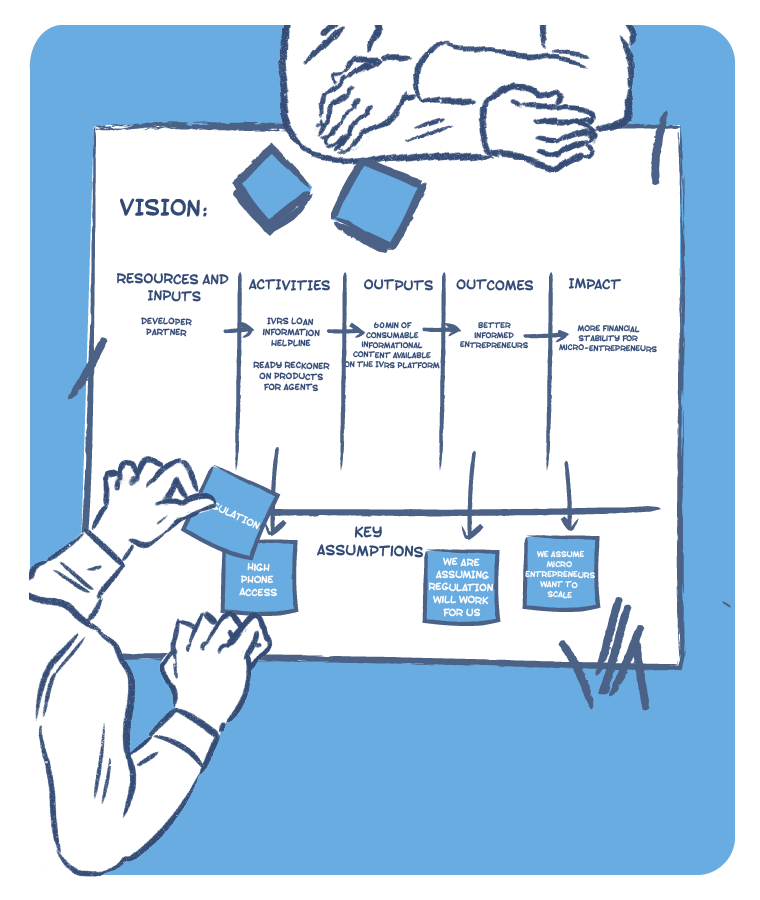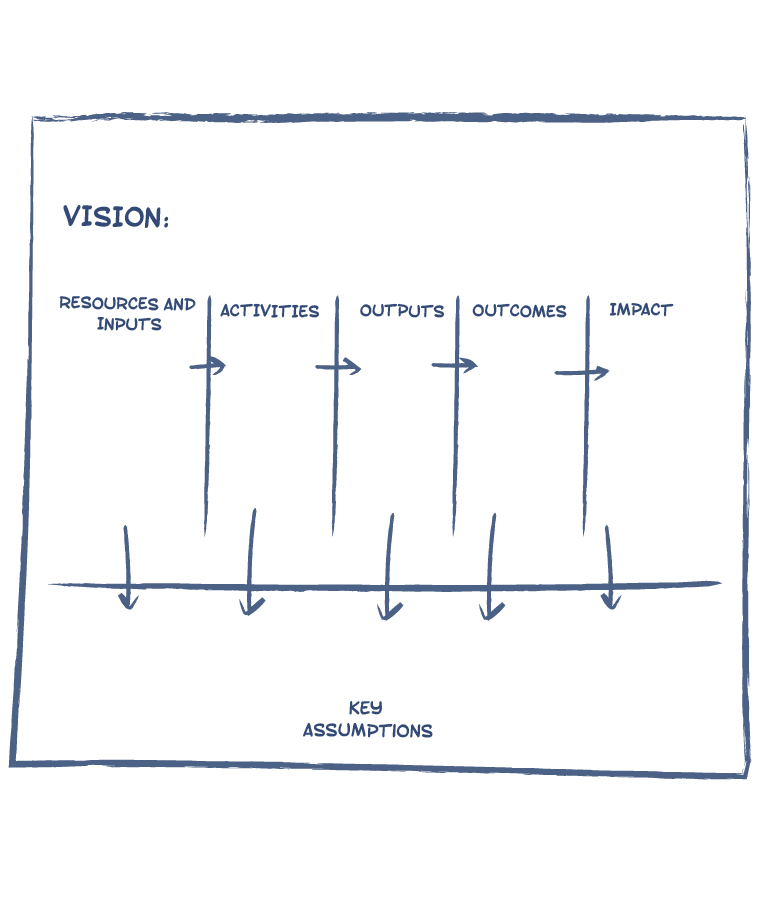STRATEGY, INNOVATION & IMPACT | VISION BUILDING
Theory of Change
90-120 Min
Theory of Change (TOC) is a framework to map 'desired change' against input activities and investments. It helps innovators build relevant strategies for change by differentiating between results and impact. The framework also helps link long term and short-term goals, creating a logical flow that can be used to guide efforts. The TOC is especially relevant to social businesses, and development sector organisations, because impact is critical. However, business sector organisations may also use it to consider their own ability to create impact. 'Product Roadmap' and 'Activity Plan' can be used to inform the TOC exercise and vice versa.
USE CASES
- Create an end to end summary of the intended impact strategy of a programme or business at conceptualisation.
- Diagnose and reflect on actual impact and fine tune strategy.
- Identify human and resource investments needed to create impact.
LIMITATIONS
While the TOC helps identify potential strategy, there is little guarantee that activities and resources identified at an early stage will lead to estimated impact on ground. TOCs are often revisited and refined as data from the ground starts emerging.

